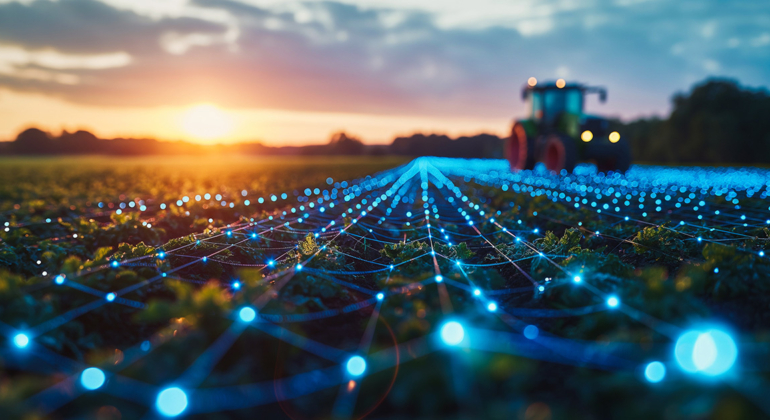Technology advancements in artificial intelligence (AI) have the potential to touch and transform nearly every sector and industry of the world economy, including energy. Although we know renewable energy is one of the main paths forward to defeat the climate crisis, the industry faces unique challenges that are as varied and unpredictable as the weather—quite literally. Power generation that depends on intermittent resources like solar and wind can be inconsistent and difficult to balance.
As AI can help streamline processes, centralize information, and predict energy needs, it will likely prove a key component to addressing current challenges and globalizing clean energy. Here, we look at some where and how AI is already being deployed for forecasting and development within the renewable energy sector.
Weather Forecasting and System Optimization
The current primary renewable energy sources—solar, wind, and hydroelectric power – depend on increasingly unpredictable weather conditions as climate change causes weather to become more extreme. By combining AI with existing scientific practices, we can analyze disparate data from multiple sources, including radar, satellites, weather models and forecasts, historical weather data, and wireless sensor networks that measure and analyze environmental conditions and help bring predictability to a huge and ever-changing data set.
For instance, machine learning-based software can be integrated with solar trackers to monitor environmental conditions and adjust tracker angles to optimize the amount of sunlight captured. An excellent example of this comes from our client Nextracker. Nextracker’s TrueCapture™ technology is an intelligent, self-adjusting monitoring and control software that collects data from hundreds of sensors and updates the algorithm of each solar array in response to existing site and weather conditions. This allows asset owners and managers to maximize solar system performance.
Machine learning (ML) is a branch of AI that can learn and adapt on its own using algorithms and statistical data. AI systems with ML capabilities can benefit weather forecasting as well as predicting power demand. By analyzing consumption data and identifying patterns, AI technologies can predict surges and lulls in energy consumption across the grid, allowing power companies to adjust production and potentially store energy to keep a consistent flow. The accelerating deployment of smart, AI-enabled energy storage systems will also allow for more renewable resources to be used and enhance reliability and grid services.
Another example of ML is an algorithm developed by Michael Howland, a professor at MIT, which analyzes the “wake effect”—the reduction in speed and added turbulence of the wind after it hits a wind turbine. This reduces a wind farm’s total energy production by 10-20%. The algorithm allows for turbines to be re-oriented to reduce the wake effect and increase total energy production.
On the other side of the electric meter, distributed generation resources such as residential, commercial and community solar and storage benefit from advances in ML and AI technologies as well. Smart home energy management systems, microgrids and emerging solutions such as virtual power plants harness the data collection, analysis and control benefits of AI across distributed networks.
Project Planning, Safety and Maintenance
Planning where and how best to build massive utility infrastructure projects like wind farms and solar power plants can be challenging and costly. With the help of AI, data can be analyzed to identify the best possible location for siting and building these renewable energy projects. Solar and wind farms, geothermal plants and hydroelectric dams all benefit when they are positioned for peak energy harvest.
Delays caused by component shortages or delays and scheduling challenges are common during project construction. AI tools can help identify labor solutions, source equipment, and problem supply-chain constraints to keep development on track.
AI with ML capabilities can collect data from sensors on wind turbines and solar arrays to identify immediate and future operational needs and optimize maintenance schedules. Renewable energy systems can be operated and maintained more safely and efficiently when intelligent data collection can alert maintenance engineers and technicians to faulty components and underperforming systems.
As another example from Nextracker, the company’s NX Navigator software uses ML to provide additional monitoring, control and risk mitigation for large solar plants. NX Navigator allows operators to efficiently monitor all solar tracker equipment, receive real-time insights on operational issues, pre-schedule regular maintenance visits, remotely address software issues, and move the entire solar array into a safe stow positions in case of hail, high winds and other extreme weather.
Advancing AI
From weather forecasting to system optimization, project planning to maintenance, AI technologies can help streamline processes, reduce costs, and increase efficiency across the renewable energy sector. The potential for AI to transform the industry has never been greater, and as we continue to grapple with the challenge of transitioning to a cleaner, more sustainable energy future, AI will undoubtedly play an important part in paving the way forward.


